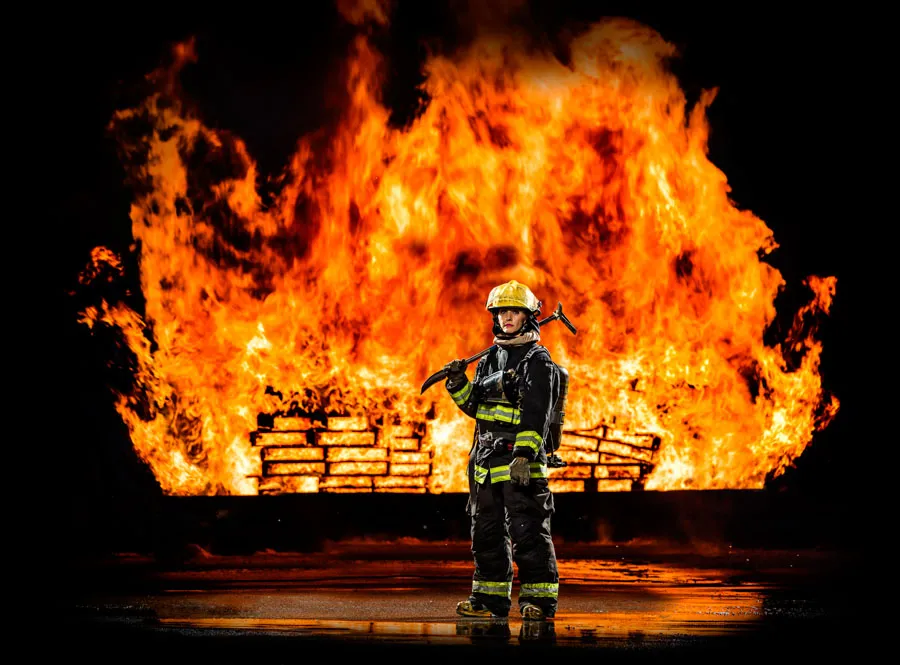
2016 Best of Show UPAA. Photo by Nathaniel Ray Edwards, Utah Valley University
Congratulations to Nate on Winning Best of Show in the 2016 UPAA Annual Print Competition. I asked Nate if he would submit a post about how he made this image. Below is the back story.
Behind the scenes photos by Jay Drowns all others by Nathaniel Ray Edwards
Our office was contacted by one of the associate professors in Emergency Services and wanted to have a group photo taken of the students in the Recruit Candidate Academy with the university president. He had seen a photo I had taken of President Holland with students on top of Mount Timpanogos from a hike earlier that year, and wanted something “similar”.
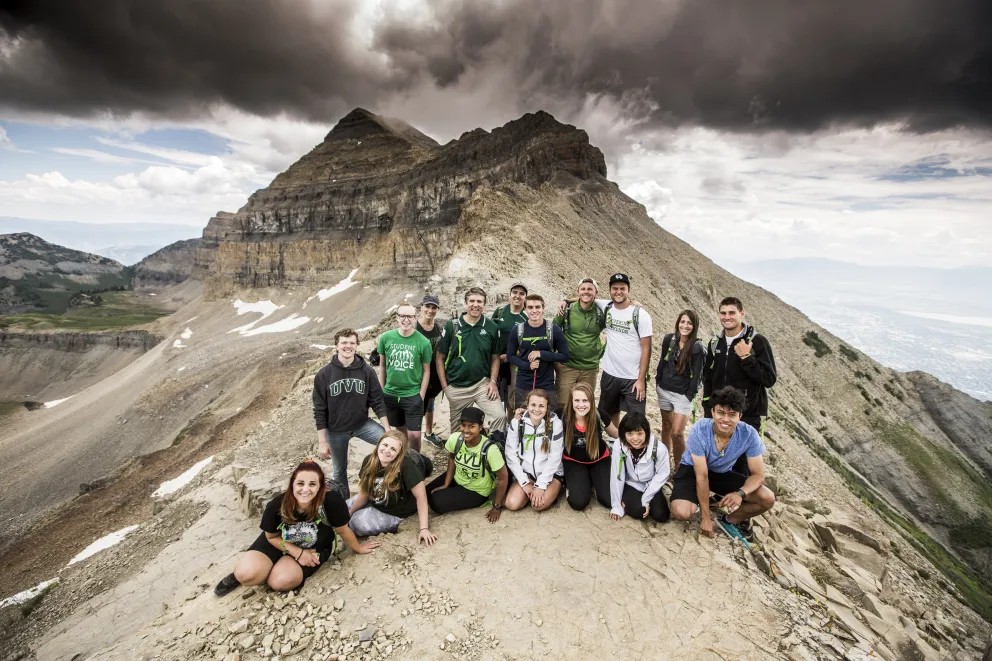
We met a few times and discussed different ideas, visiting their new fire lab where they do most of their live fire training, and talked about different possibilities. They were great to work with, willing to help in any way, trusted my vision, and were excited to light stuff on fire! At first they wanted the entire class in the photo (about 25 students). We talked to them about how that is for sure a possibility, and also made a few other suggestions with less students, as more of a feature shot representing the academy with the president as our primary focus, knowing that this was a unique opportunity and wanted to take advantage of that. They liked the idea.
We ended up deciding on two different scenarios, set up within feet of each other to maximize our time and resources, knowing the presidents busy schedule.
We did a test shoot the week before the actual shoot with President Holland to figure a lot of things out. Some questions I needed answered were:
- What lens (wide vs telephoto)?
- What angle?
- How many students to use?
- Do we have a diverse group of students to use?
- President’s available time?
- How will the flames burn?
- How long will the flames burn at their highest?
- What order do we need to light the fire in the different spots to get it to burn evenly?
- What lighting setup to use?
- Will the strobes be a problem with the reflective strips on the fire suits?
- What fire fighting tools/props are available and will each student have?
- How close can the lights be to the flames without them melting or catching on fire?
- How close can the students and the president stand to the flames without melting or catching on fire?
The Test Shoot
We showed up about 4 hours before the shoot time to direct the students where we wanted flames, figure out lighting, etc.
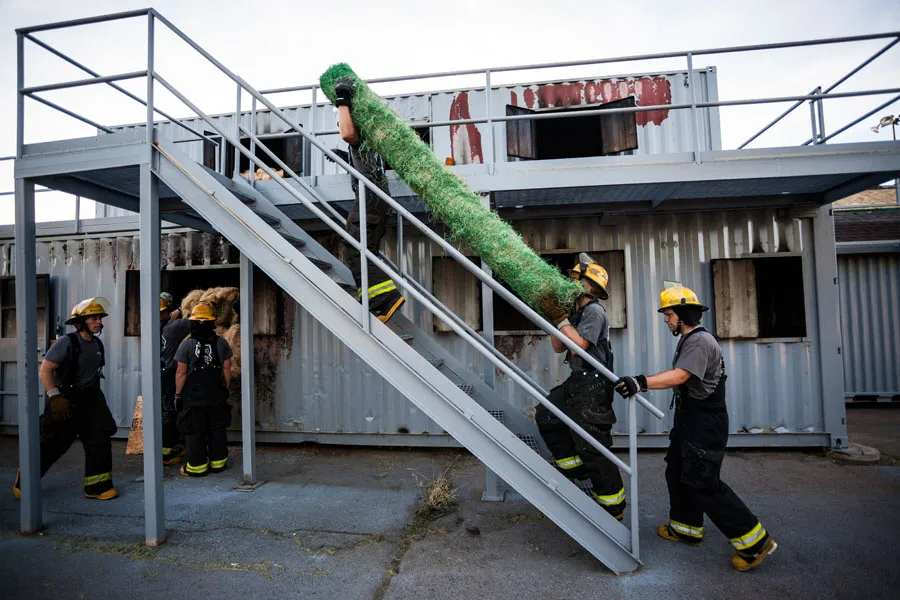
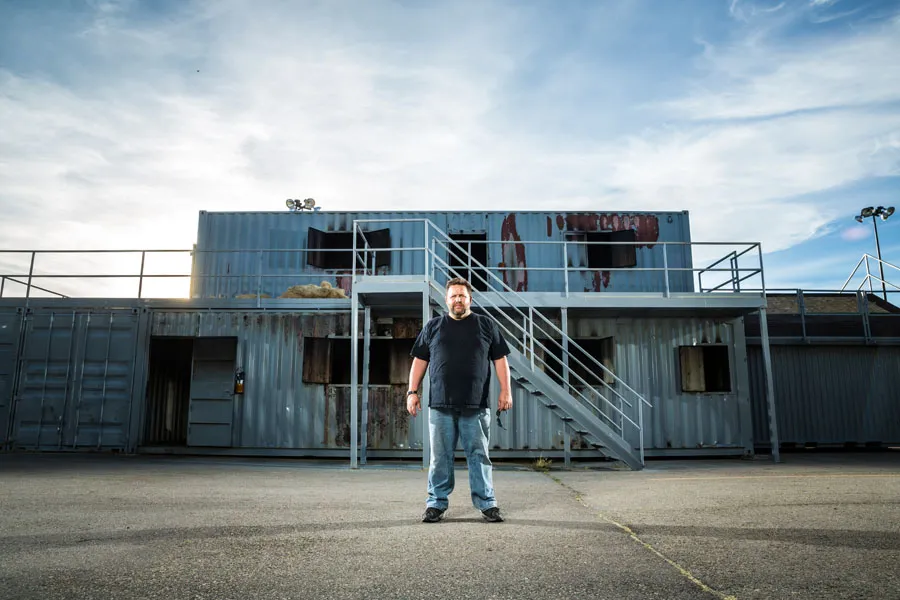
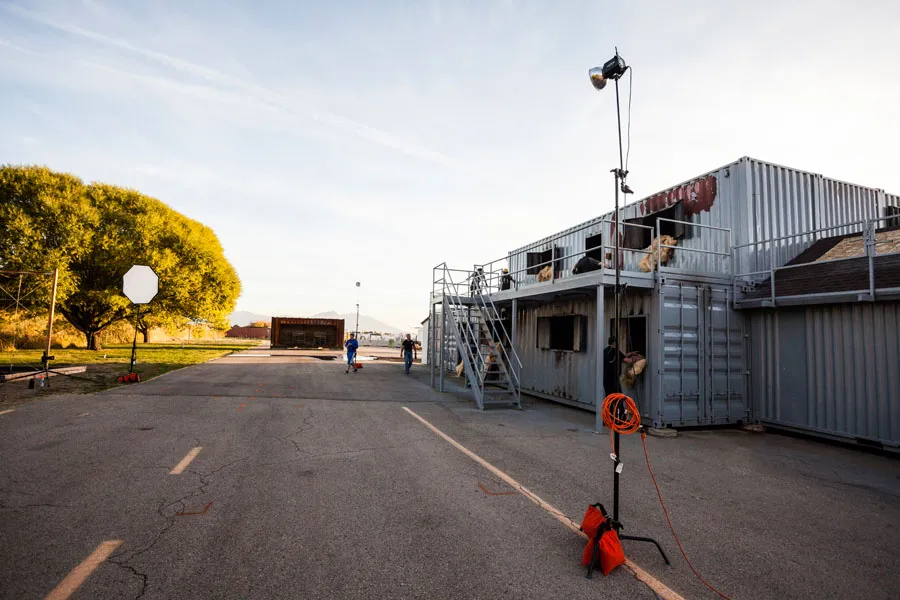
I had a simple 3 light setup: two Einstein’s with just the reflectors, and one Einstein with a large octabox for the key light (I used a large Paul Buff strip box on a boom the next week in its place). We had them wet the ground for added reflection and dimension and then lit the fire. We discovered we had about a 60 second window with the flames at their highest.
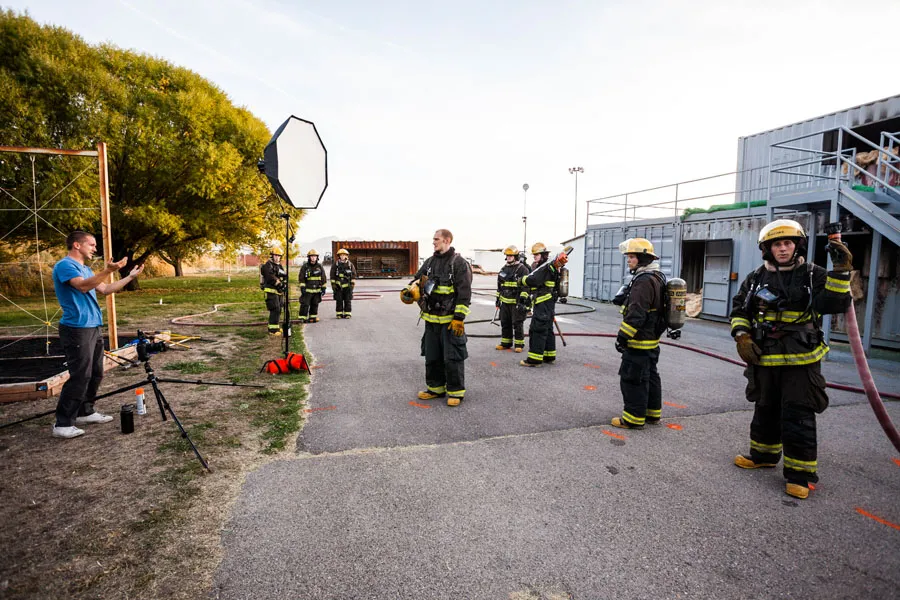
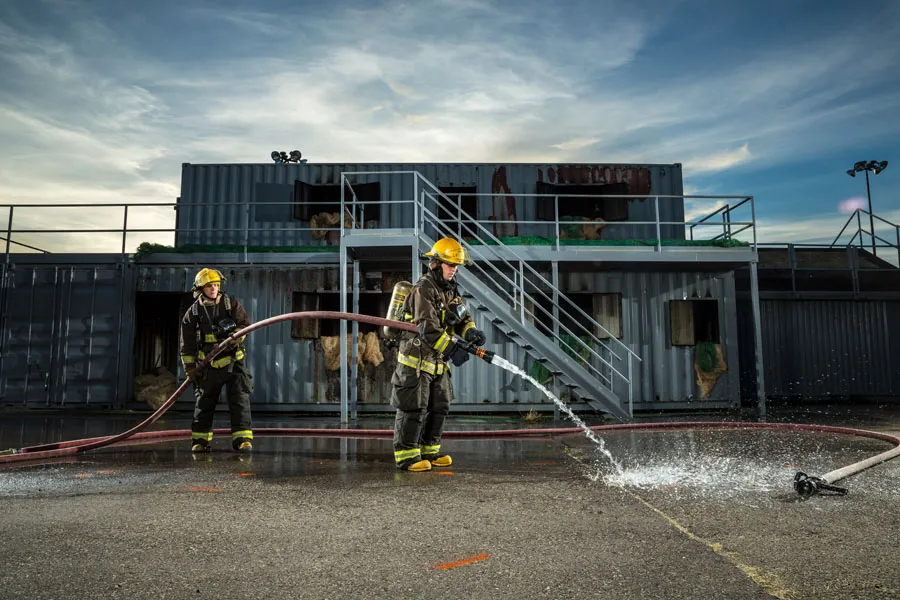
I wanted to show these future firefighters and the university president as strong, fearless, and hero-like, so for the first scenario in front of their new training facility, I ended up shooting 24mm at a low angle. We tried a couple different groupings with 7 students and one with 4 students, plus one standing in for President Holland who was about his same height. I marked their positioning with spray paint on the ground, so they would know exactly where to stand when we did the “real” shoot the next week. (I ended up ditching the 4-student scenario and only did the 7-student scenario the following week after looking through the images).
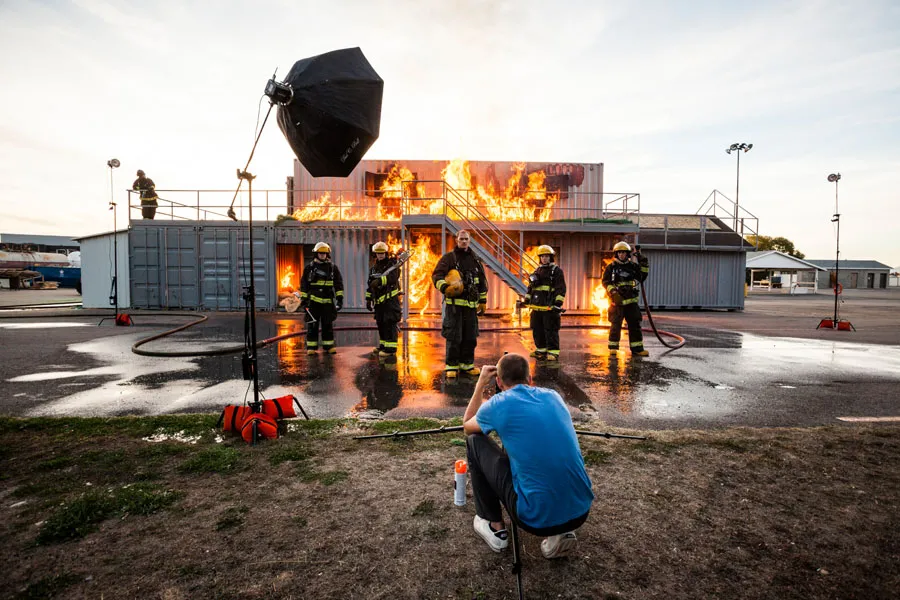
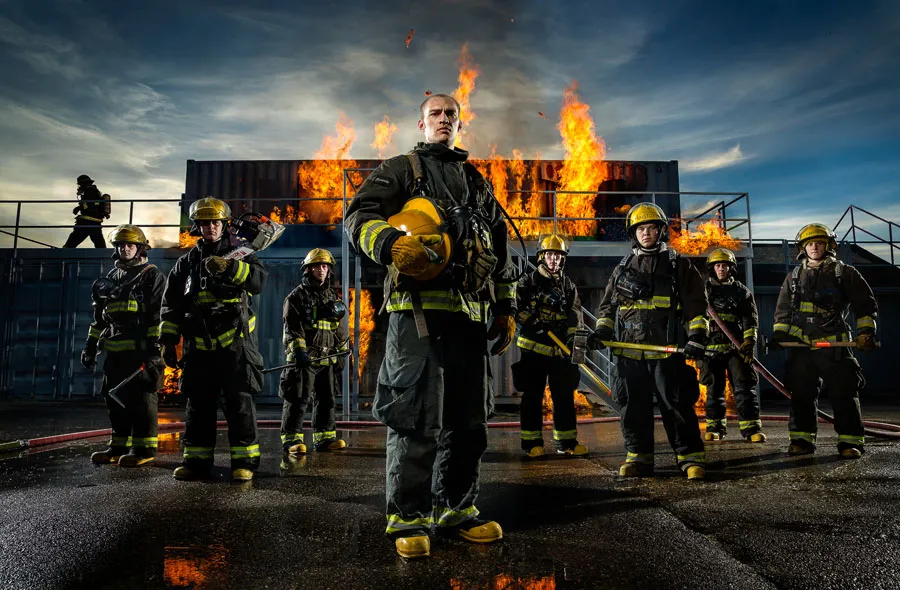
Afterward, students took about 5 steps and turned to face a different direction for the next scenario, where we used a big “burn box” with wooden pallets to fuel the flames. We knew we would be limited on time, so we set the two scenarios close together. You are much more likely to get more time with someone high profile if you make things easy and quick for them, with relatively little pain. They will also appreciate the efficient use of their time, and your professionalism. This is a good way to build those professional relationships.
For this shot I wanted the flame to almost engulf the students and the president, but the burn box would get much, much, hotter than the training facility, so we couldn’t have the lights or students as close to the fire. They would have to be at least 20-30 feet away to be safe. So I decided to use a 300mm to compress the image and make it look like they were closer to the flames than they really were. I think we had them standing about 50 feet away from the flames in the end.
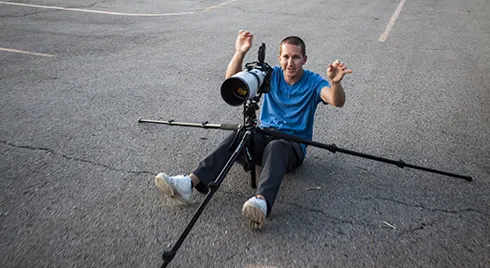
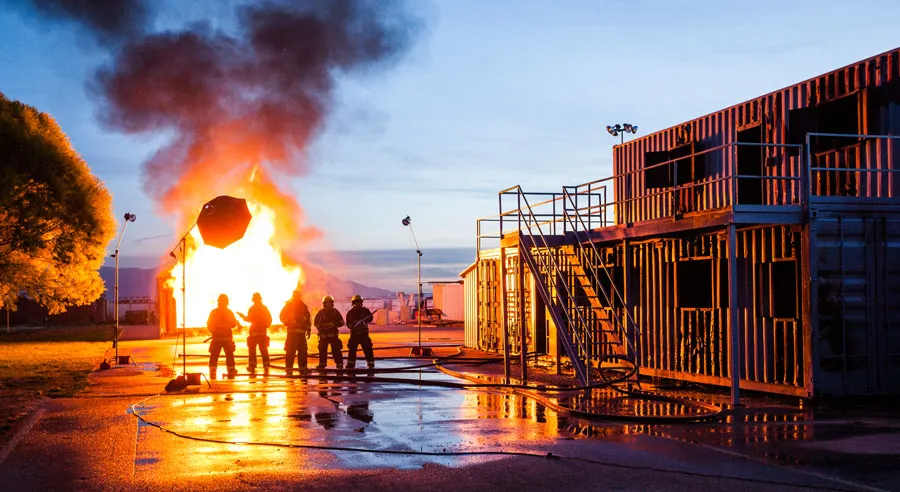
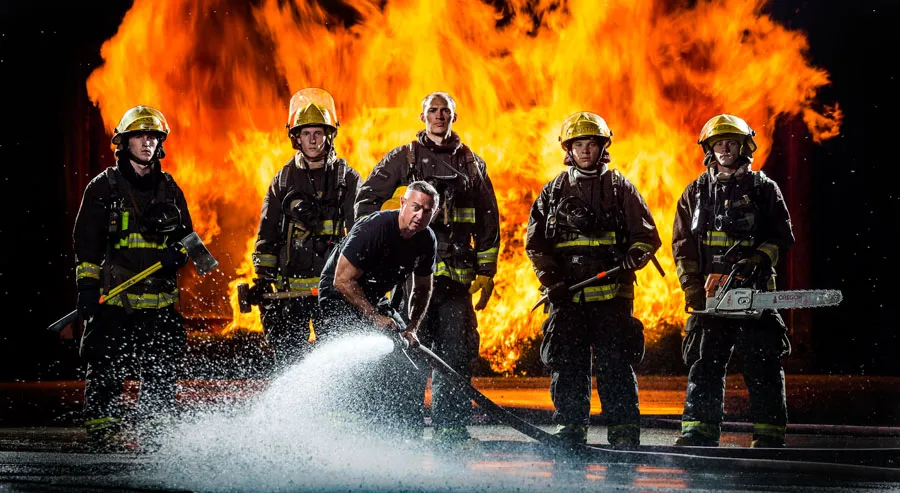
We again decided on their placement, tools/props, marked the ground, while assistants were moving the lights, lit the fire, and then got some water down. We had a little more time to take photos with this scenario due to the wood burning slower. After we got the group shot, the flames were still burning high, so I had each individual student and instructor jump in with their tool/prop of choice. This is another good way to build relationships-- and who wouldn’t want their photo in front of a huge wall of flames? The test shoot went great. We were prepared for the shoot the next week, learned what we needed to, and solidified our plan.
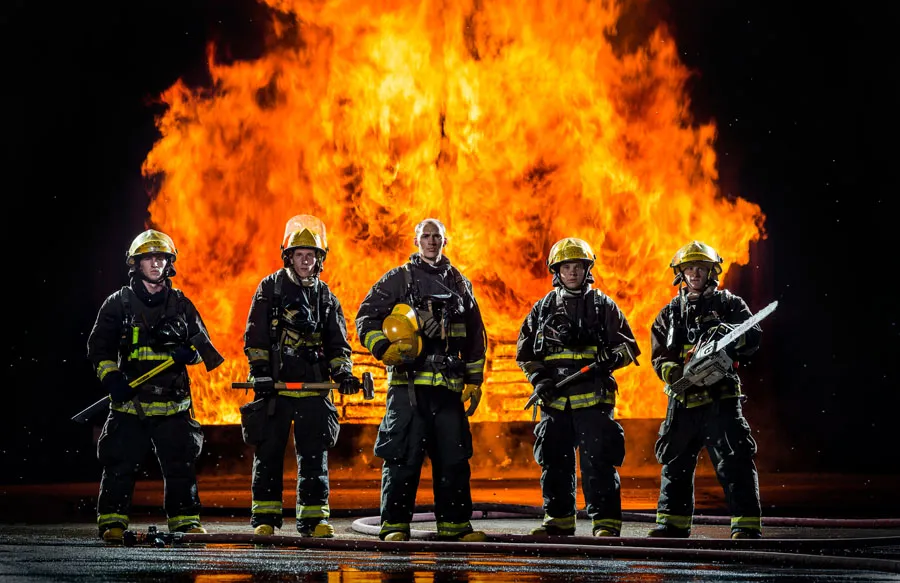
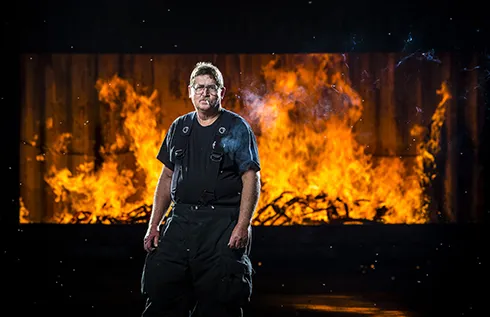
The Real Shoot
The next week we showed up a couple hours early again, got the fire ready, made a few adjustments, and had the students in position. President Holland arrived, got suited up, and briefly met with the students. I ran over the schedule with him so he knew what to expect. After the small group shot when the flames started to decline, I had the whole group go in for a shot. We got all the images we needed in less than 20 min with the President. He was very pleased and loved the photos!
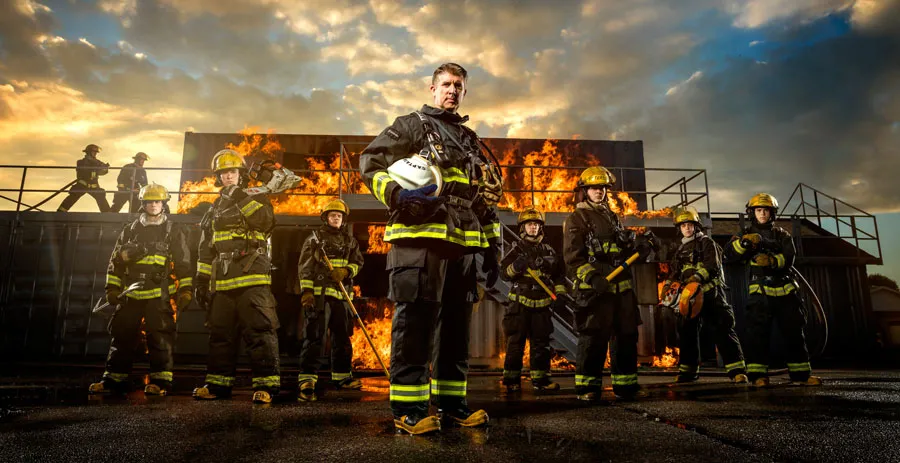
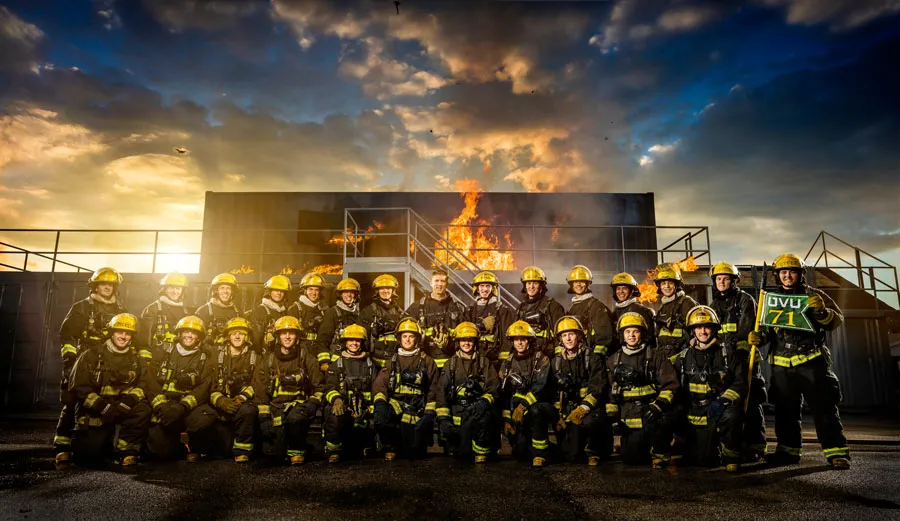
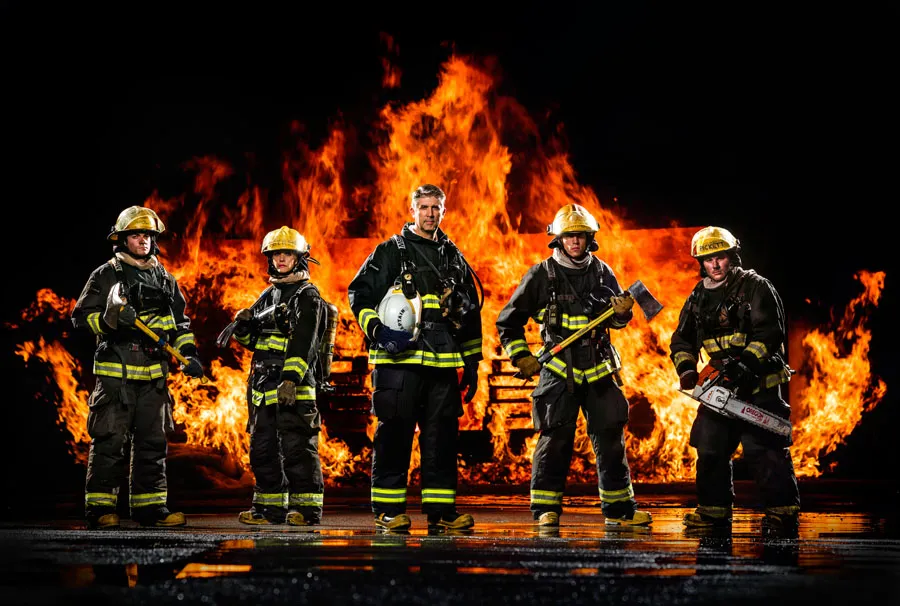
This shoot took a lot of hands and a lot of preparation. There was a whole team of people helping out to make this run smoothly--and it did. These are some of my favorite images I have taken so far, and one of the most fulfilling shoots I have done. The people who sought us out to take the photos have been over-the-top excited about the pictures, very complimentary, and our relationships with that department have been strengthened. It wouldn’t have happened without an idea sparked from a photo, a lot of preparation, and a lot of help.
I can’t remember the exact details, but as we were leaving the shoot that night, I was asked by someone in the Emergency Services department: “Now we have to think how we will top this next year.” I look forward to that challenge.
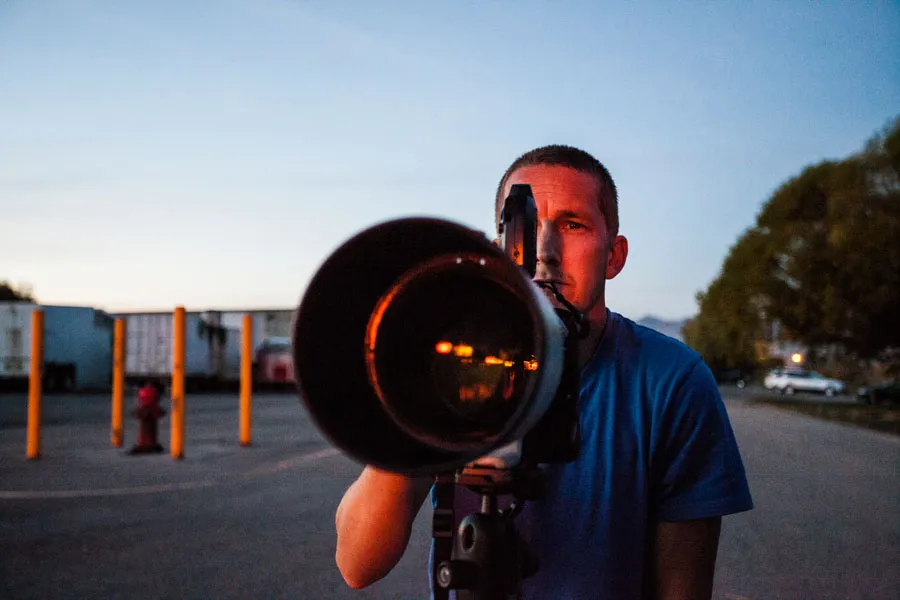
As it often happens, our favorite images are not the ones we go out to get. Taking that little extra time to do a little more makes all the difference.
Nathaniel Ray Edwards works at Utah Valley University, he can be reached at NEdwards@uvu.edu